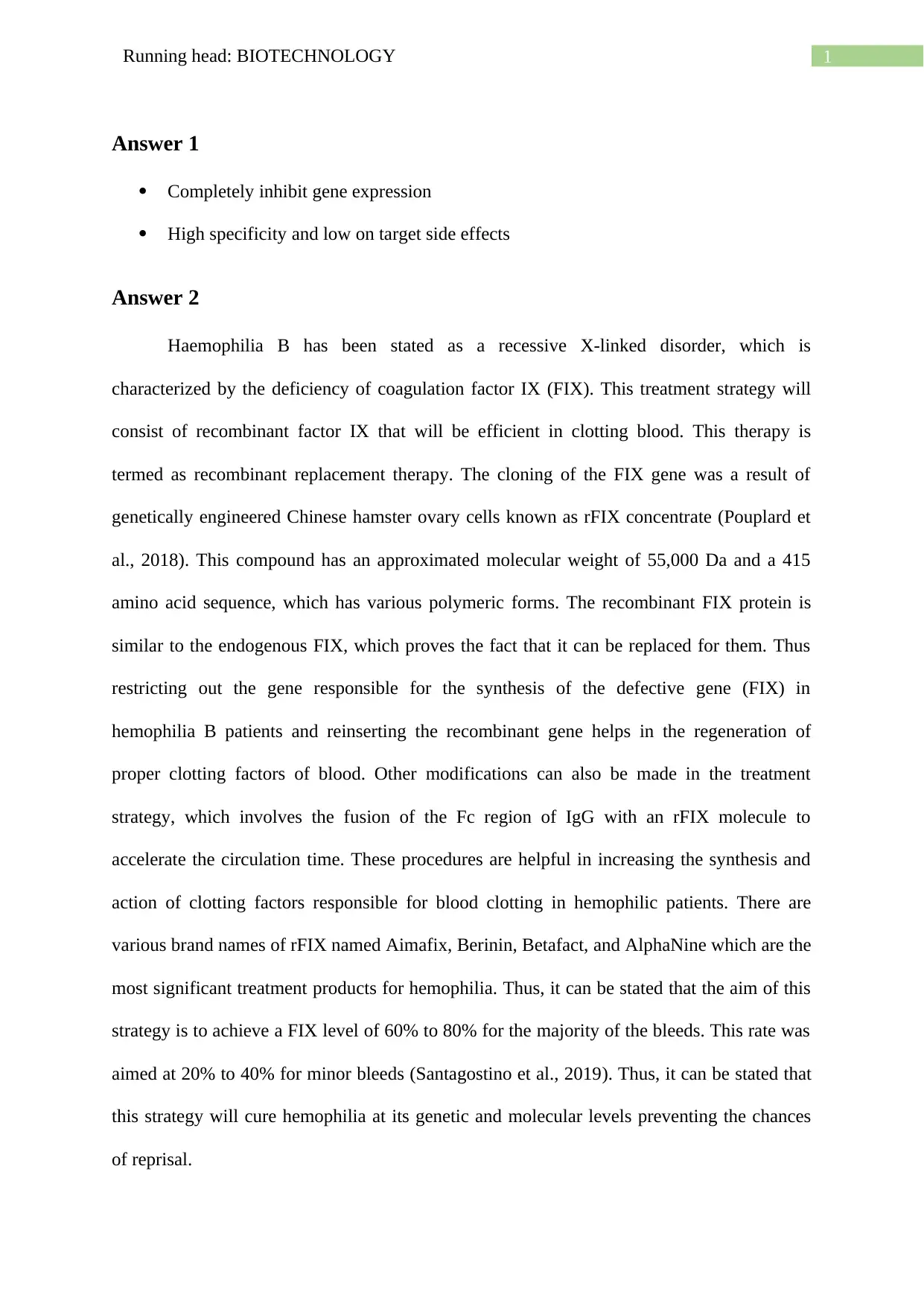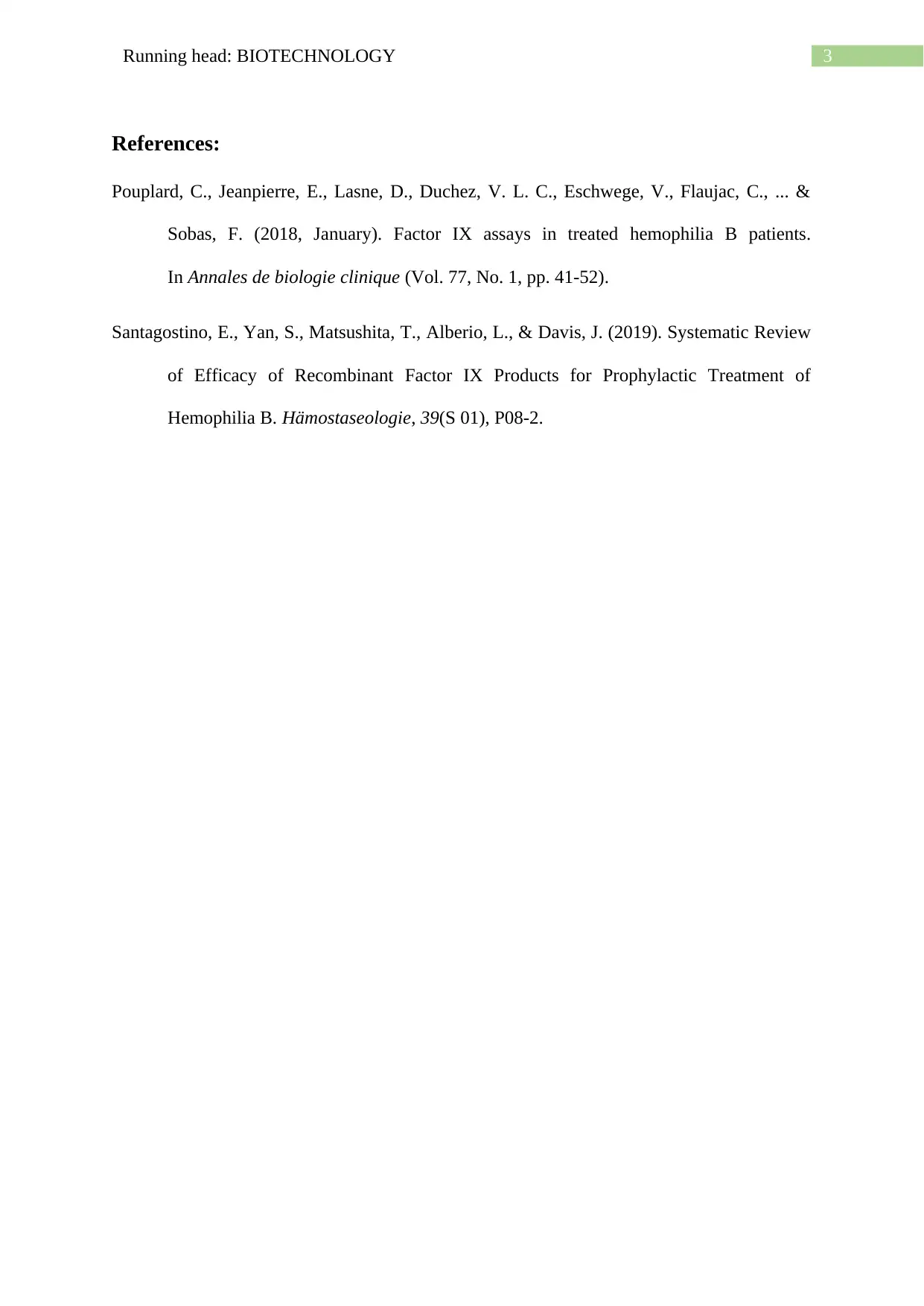Biotechnology Assignment: Hemophilia Treatment and Research
VerifiedAdded on 2022/09/09
|4
|518
|18
Homework Assignment
AI Summary
This assignment delves into the application of biotechnology in treating hemophilia, specifically focusing on recombinant factor IX (rFIX) and gene therapy. It addresses the mechanisms of action, including the replacement of defective genes and the use of modified rFIX molecules to enhance clotting factor activity. The assignment outlines the process of developing rFIX, from cloning the FIX gene to the production of rFIX concentrates and the various brand names available. Furthermore, it discusses the preclinical and clinical stages involved in evaluating the safety and efficacy of treatments, from identifying biologically active doses to testing on animal and human subjects. The assignment also mentions the aim to achieve specific FIX levels to manage bleeding in hemophilia patients. The assignment also includes references from various sources.
1 out of 4







![[object Object]](/_next/static/media/star-bottom.7253800d.svg)